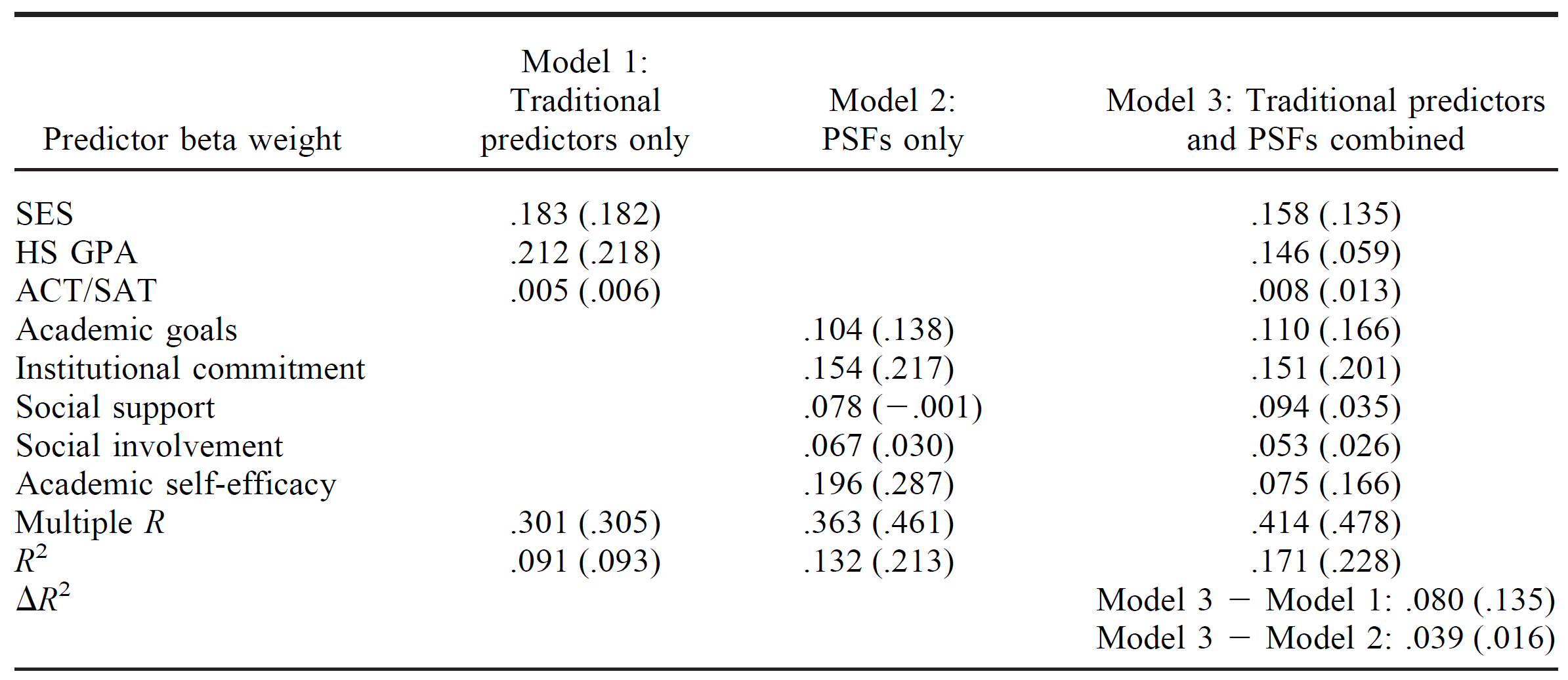This section provides a review of the literature and theoretical framework leading to the establishment of the foundations of the Adaptiva® college dropout prediction model.
Since the 1970s, several theoretical developments have allowed a better and more comprehensive understanding of the college dropout phenomenon. Consistent themes in theoretical literature include academic, non-academic, socio-economic, institutional, and integration factors (Aljohani, 2016).
Figure 1
Historical timeline of student retention models for the past eight decades

Note. Own elaboration based on Manyanga et al., 2017.
Traditionally, college dropout theoretical models are divided into five major groups, depending on the perspective and emphasis that such models put on the explanatory variables:
Thus, theoretical models have evolved towards more comprehensive conceptualizations of the college dropout phenomenon. Comprehensive models represent a synthesis of the most relevant factors considered in previous research, such as individual, academic, institutional, and socio-economic factors (Bean, 1980, 1982; Behr et al.., 2020; Díaz, 2008; Nora and Rendon, 1990; Pascarella, 1980; St. John et al., 1997; Swail, 2003). The variety of theoretical approaches to explaining college dropout confirms the phenomenon’s complexity. These approaches coincide in assessing the interaction of a series of factors that explain withdrawal. Alban & Mauricio’s (2019) review identified 110 factors commonly used to predict college dropout, classified according to the five traditional, model-based dimensions: personal, academic, economic, social, and institutional.
Figure 2
Swail’s (2003) Geometric Model of Student Persistence and Achievement

Note. Own elaboration based on Swail, 2003.
While college dropout predictive models mainly consider academic, economic, and psychosocial factors in explaining dropout, models adding psychological, social, and integration perceptions to these variables, such as motivation, commitment, and linkage between student and academic community, exhibit better explanatory results than those that do not. According to a meta-analysis carried out by Robbins et al. (2004) in 109 studies on dropout and academic performance, combining traditional factors with psychosocial and integration variables contributes incrementally to dropout prediction, thus relieving the need to re-evaluate persistence and college dropout models to incorporate crucial psychosocial variables.
Figure 3
Combining Multiple Psychosocial and Study Skill Factors (PSFs) and Traditional Predictors to Predict Retention
Note. Own elaboration based on Robbins et al., 2004.
Given the growing relevance of psychosocial and integration factors in predicting college dropout and performance, a number of psychometric instruments have been developed to consider the wide range of variables that literature has associated with students’ post-enrollment experiences. These instruments include the ACT Engage College (ACT Inc., 2016), the College Student Inventory (Stratil et al., n.d.), the College Success Factors Index (CENGAGE, n.d.), the Transition to College Inventory (Pickering et al., 2003), and the Student Adaptation to College Questionnaire (Taylor & Pastor, 2007). Since these instruments were not specifically built to predict college dropout, they are not based on dimensions reported by the theoretical literature.
Figure 1
ACT Engage College domains

Note. Own elaboration based on ACT, 2015.
Our model uses an idiosyncratic psychometric instrument to collect students’ psychosocial perceptions and adjustments to college life. The questionnaire is based on comprehensive retention theories and models such as Astin’s Involvement Theory (1984), Bean’s Student Attrition Model (1981), Bean & Eaton’s Psychological Model (2000), Cabrera, Castaneda, Nora, & Hengstler’s Integrated Model (1992), and Tinto’s Integrated Model, and Tinto’s Student Integration Model (1975). The instrument consists of ten dimensions:
Diverse studies show the structural validity and predictive capacity of the psychometric instrument on student retention. Findings indicate that the questionnaire improves dropout prediction concerning socio-demographic and academic performance data generally present in the institutions’ databases. Such findings indicate that evaluating students’ interactions with the academic and social environment of the institutions is critical in predicting college dropout.